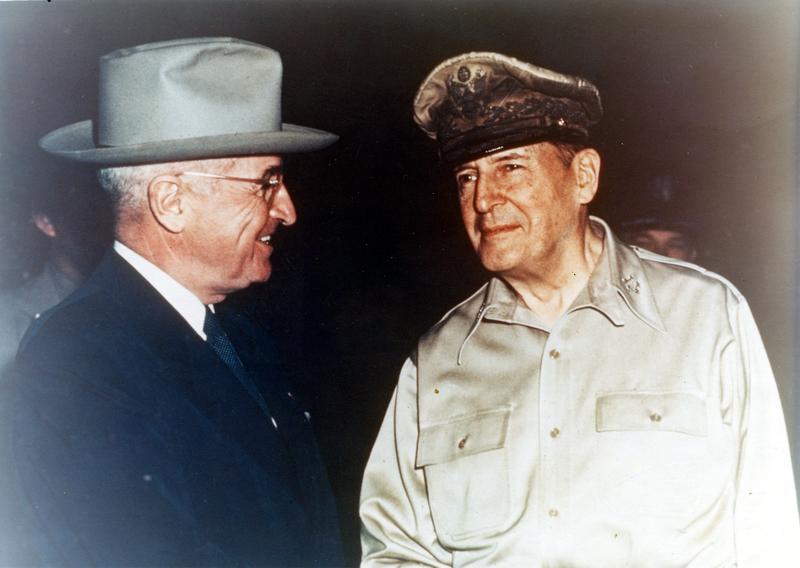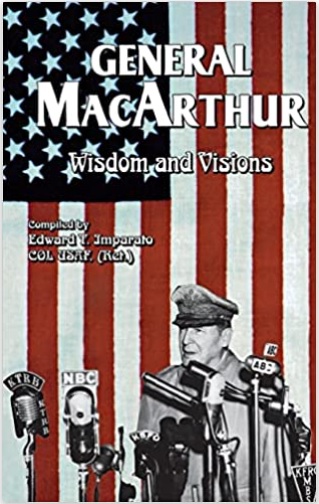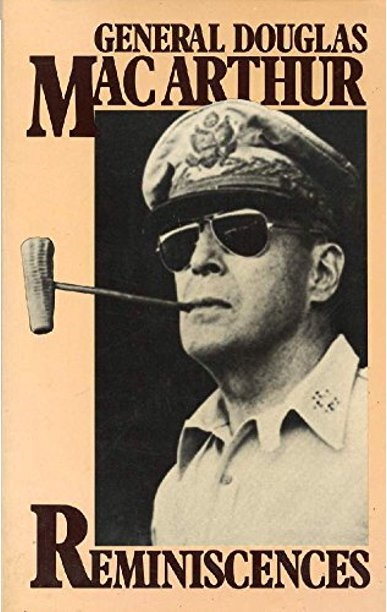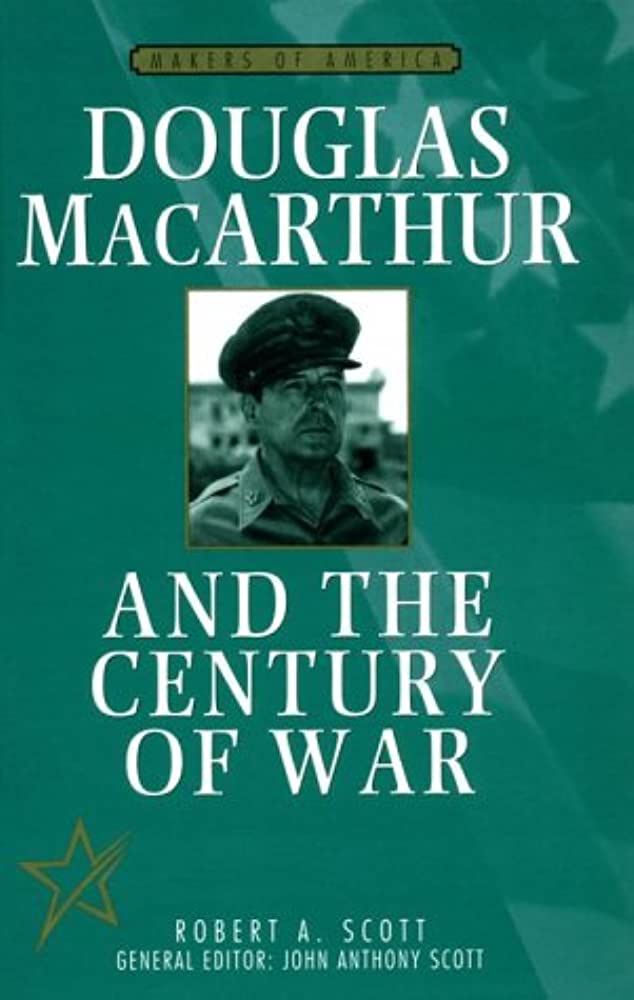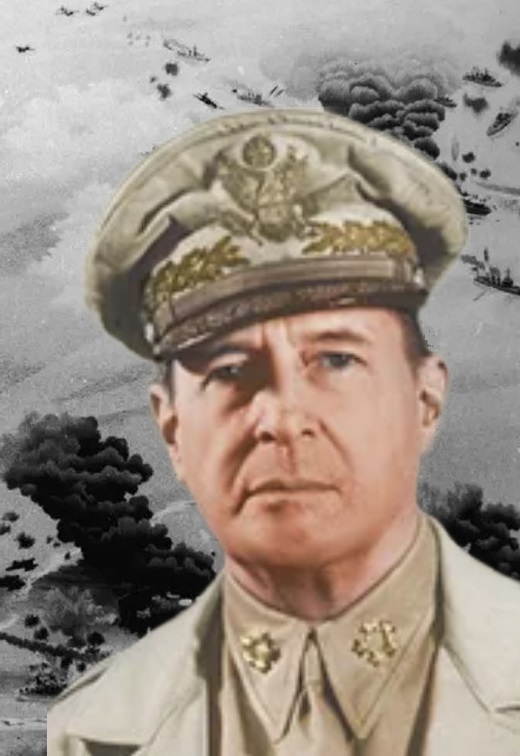
General MacArthur's Views about Formosa
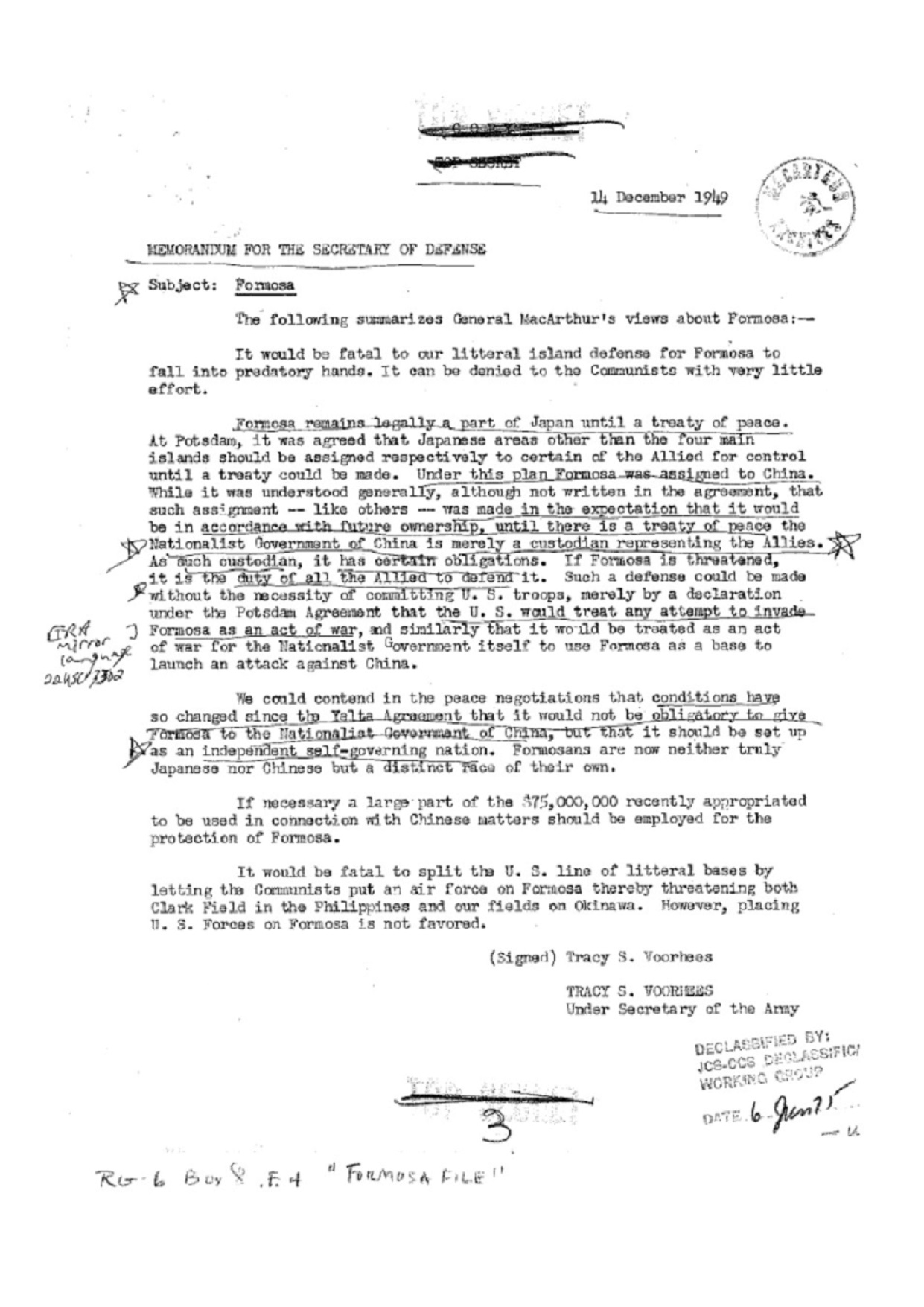
14 December 1949
MEMORANDUM FOR THE SECRETARY OF DEFENSE
Subject: FormosaThe following summarizes General MacArthur's views about Formosa:It would be fatal to our littoral island defense for Formosa to fall into predatory hands. It can be denied to the Communists with very little effort.Formosa remains legally a part of Japan until a treaty of peace. At Potsdam it was agreed that Japanese areas other than the four main islands should be assigned respectively to certain of the Allied for control until a treaty could be made. Under this plan Formosa was assigned to China. While it was understood generally, although not written in the agreement, that such assignment -- like others -- was made in the expectation that it would be in accordance with future ownership, until there is a treaty of peace the Nationalist Government of China is merely a custodian representing the Allies. As such custodian, it has certain obligations. If Formosa is threatened, it is the duty of the Allied to defend it. Such a defense could be made without the necessity of committing U.S. troops, merely by a declaration under the Potsdam Agreement that the U.S. would treat any attempt to invade Formosa as an act of war, and similarly that it would be treated as an act of war for the Nationalist Government itself to use Formosa as a base to launch an attack against China.We could contend in the peace negotiations that conditions have so changed since the Yalta Agreement that it would not be obligatory to give Formosa to the Nationalist Government of China, but that it should be set up as an independent self-governing nation. Formosans are now neither truly Japanese nor Chinese but a distinct race of their own.If necessary a large part of the $75,000,000 recently appropriated to be used in connection with Chinese matters should be employed for the protection of Formosa.It would be fatal to split the U.S. line of littoral bases by letting the Communists put an air force on Formosa thereby threatening both Clark Field in the Philippines and our fields on Okinawa. However, placing U.S. Forces on Formosa is not favored.
(Signed) Tracy S. Voorhees TRACY S. VOORHEES Under Secretary of the Army
original document: General MacArthur's Views about Formosa
|
REFERENCE
MacArthur Memorial Museum and Research Center MacArthur Square, Norfolk, Virginia 23510 14 December 1949 MEMORANDUM FOR THE SECRETARY OF DEFENSE Louis A. Johnson |
